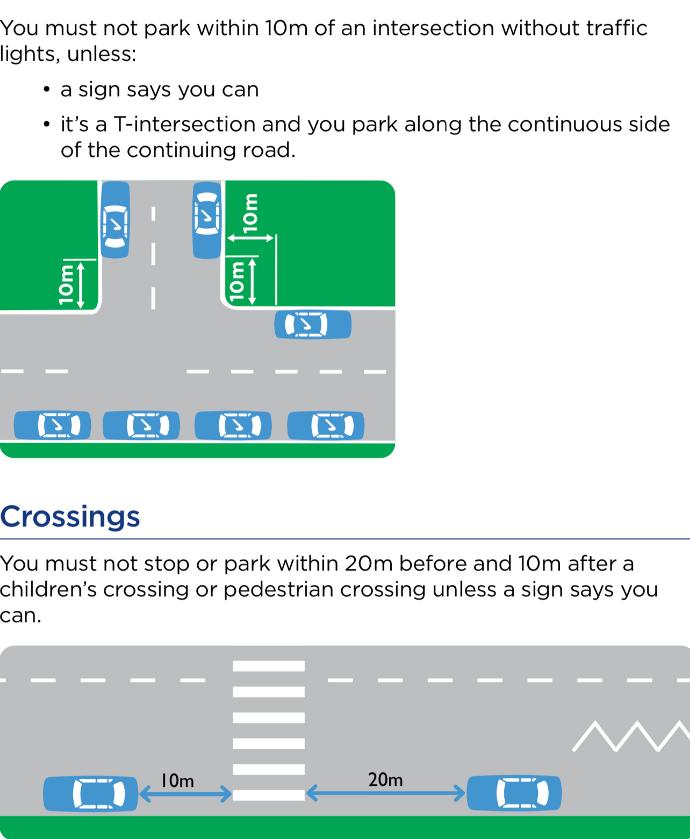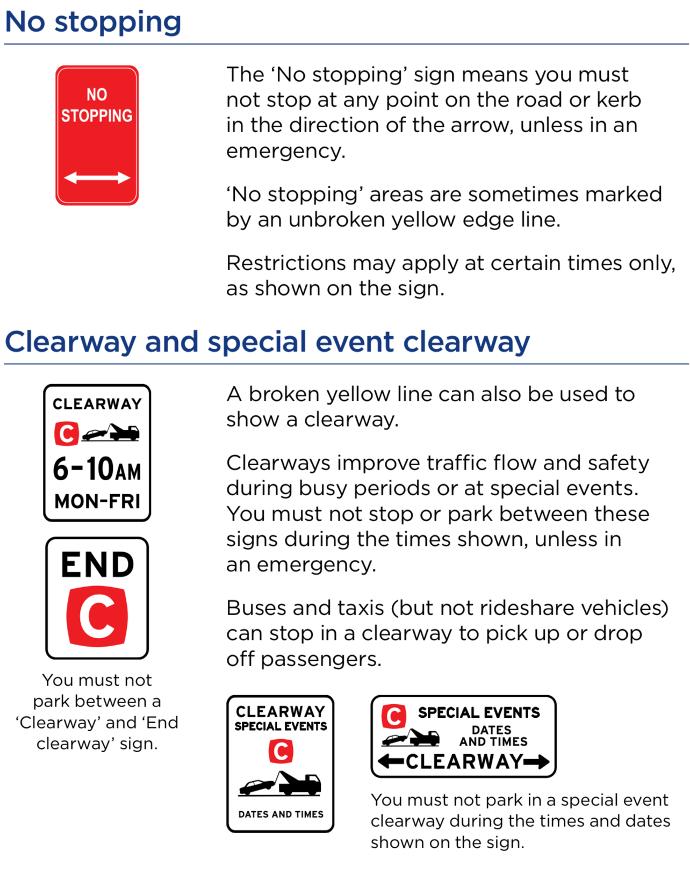This is a big subject as a result this post will be longer than my usual ones. If there is something specific you're looking for then skip forward otherwise take your time to read it completely and I'm sure you will pickup some interesting information.
There are two main ways to park – parallel and angle. Once you’ve parked, follow the parking checks to stay safe.
Parallel parking
This is the usual way to park, unless a sign says otherwise.
You must park:
• in the same direction as traffic
• parallel and as close as possible to the kerb
• within any line markings
• at least 1m in front of and back from any other parked vehicle.
On a one-way street, you can also park on the right side of the road.

Angle parking
You can angle park where signs or line markings show you can.
Unless a sign or road marking says otherwise, you must park:
• at a 45-degree angle
• with the front of the vehicle to the kerb.

Parking checks
Before leaving your vehicle, make sure the parking brake is on.
If you move more than 3m away from your vehicle you must also:
• remove the key from the ignition
• lock all doors and windows (if there’s no-one in the vehicle).
Before opening your door, you must check your mirrors and blind spots for pedestrians, bicycles and other vehicles.
Before pulling out from the side of the road or a parking area, you must:
• indicate for at least 5 seconds
• check mirrors
• look over your shoulder to check blind spots.
Parking rules help you park where it’s safe and convenient for others.
There are different ways to park, as well as safe places to stop or park. There are times and places where you can stop for short periods but you must not park. Read parking signs carefully to check restrictions.
You can get a fine and, in some situations, demerit points for parking illegally.
You must never leave children or animals alone in a vehicle.
They’re in danger of:
• dehydration and burns in a hot vehicle
• playing with controls, such as the handbrake, gears and power windows
• being harmed if the vehicle is stolen.
No parking
You must not stop or park your vehicle:
• alongside another parked vehicle (double park)
• across a driveway, unless you’re picking up or dropping off passengers
• on a median strip, unless a sign says you can
• on a traffic island
• within an intersection
• on a children’s crossing or pedestrian crossing
• on a railway level crossing
• on footpaths and nature strips, unless a sign says you can
• in a slip lane, unless a sign says you can.
Your parked vehicle must not block the flow of traffic or become a danger to other road users.
Some common parking scenarios and signs


Receive 10% off your first 90 minute driving lesson when you book online. Use the coupon code 10%OFF when booking. I look forward to seeing you soon.
Book now
Parking